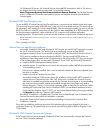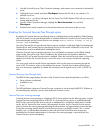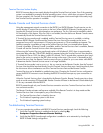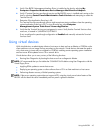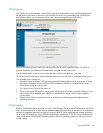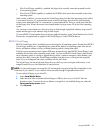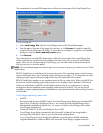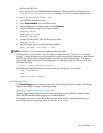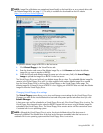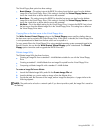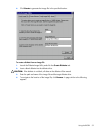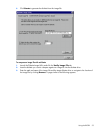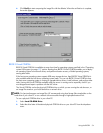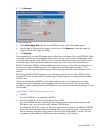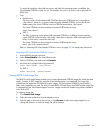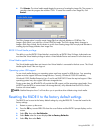
Using the RILOE II 50
NOTE: Image files of diskettes are created and stored locally on the hard drive or on a network drive with
the Diskette Image Utility (on page 51). This utility is available for download from the HP website
(http://www.hp.com/servers/lights-out
).
To upload a diskette image to RILOE II on the host server:
1. Click Virtual Floppy in the Virtual Devices tab.
2. Enter the location and name of the diskette image file, or click Browse and select the diskette
image file you want to transfer to RILOE II.
3. When the full path and diskette image file name are in the text entry field, click Insert Floppy
Image to upload the image file to RILOE II in the host server.
The Virtual Floppy Drive can hold only one diskette image file at a time. The uploaded diskette image file
remains in the Virtual Floppy Drive until it is either replaced with another diskette image file or erased
from the Virtual Floppy Drive by clicking Eject Virtual Floppy on the Virtual Floppy Status page. The
diskette image file is erased if power to RILOE II is lost. Logging out of RILOE II does not erase the diskette
image file from the Virtual Floppy Drive.
Changing Virtual Floppy drive settings
The Virtual Floppy screen allows you to view and change current settings for the Virtual Floppy Drive.
Changes you make to the virtual diskette drive boot and write-protect options take effect when you click
Submit Changes.
A host server can use files uploaded to a Virtual Floppy Drive only if the Virtual Floppy Drive is active. The
Virtual Floppy Drive becomes active when the RILOE II restarts the host server using a diskette image file
uploaded to the Virtual Floppy Drive. The Virtual Floppy Drive remains active until the remote host server
is restarted with its own operating system.
NOTE: Although the Virtual Floppy Drive is active, the physical diskette drive of the host server is
temporarily disabled. The diskette drive of the host server becomes re-enabled when the host server is
restarted with its own operating system and the Virtual Floppy Drive is not active.



